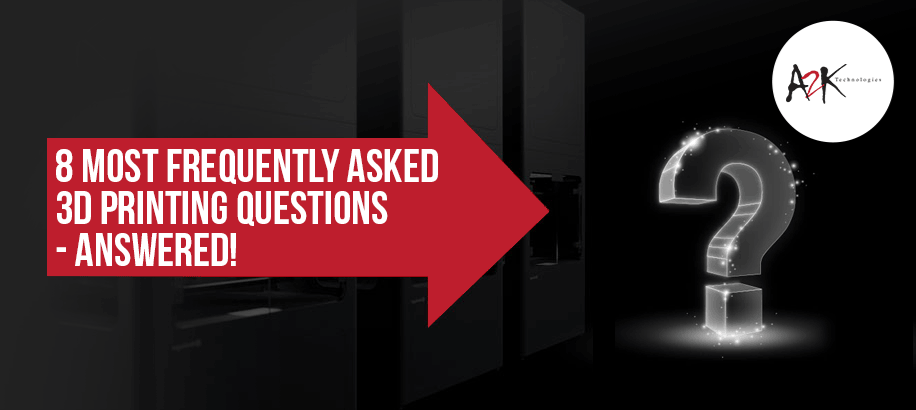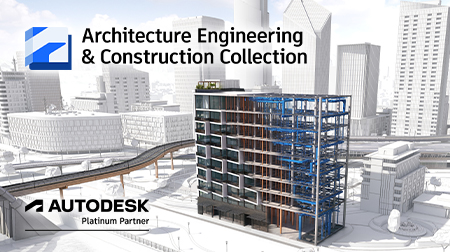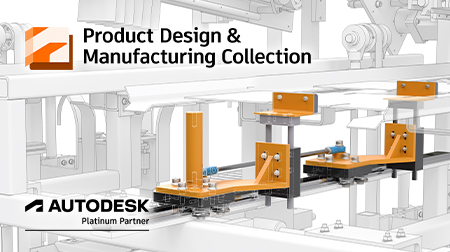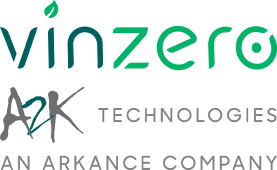
8 Most Frequently asked 3D Printing Questions - Answered!
3D printers are becoming an essential tool in the workflows of many businesses and industries. The technology is evolving fast and it is now possible to 3D print objects which were unheard of 10 years ago. 3D printing is becoming the largest disruptive technology shift since the internet. It is fascinating to see where the technology will take us in the future and it’s definitely something to look forward to. Keep reading as we answer the 8 most frequently asked 3D printing questions.
1. What is 3D printing?
3D printing also known as additive manufacturing is a process of creating three dimensional physical objects from a computer model or digital file. The physical object is made from the printer nozzle laying down consecutive layers of material such as plastic filament until the entire part is fully formed. The technology makes It possible to create any geometry imaginable, taking your creativity to the next level.
2. What types of 3D printers are there?
The most popular and reliable 3D printer brands today are Markforged, Ultimaker and Formlabs. These 3D printers have different types of technologies for different applications. The Markforged brand offers Desktop, Industrial and Metal 3D printers. The technology used for their Metal 3D printer ‘Metal X’ is ADAM (Atomic Diffused Additive Manufacturing), which is a hybrid of metal injection moulding and 3D Printing. Markforged 3D printers are more suitable for companies who want to manufacture industrial strength parts in-house.
Ultimaker uses the 3D printing technology FFF (Fused Filament Fabrication). The FFF process extrudes the filament through a heated nozzle and the melted filament is placed onto the build platform. Layers are formed and the process is repeated until the whole object is completed. FFF is the most commonly used 3D printing technology. Ultimaker printers such as the Ultimaker 2, Ultimaker S3 and Ultimaker S5 are ideal to those who want versatile, user friendly, reliable and affordable machines to use in the comfort of their own office.
Formlabs uses SLA (Stereolithography) for their Form 2 3D printers. The SLA process uses a UV laser to solidify liquid resin into hard plastic. The upgrade from SLA is LFS (Low Force Stereolithography), a technology used in the Formlabs Form 3. The innovative LFS utilises a flexible tank and linear illumination to deliver a more accurate print. Both 3D printers, the Form 2 and Form 3, are extremely well suited to print parts that require complex geometries while delivering consistent results.
Click here to check out our blog "The 5 3D Printing Technologies that are taking over the world"

3. What types of materials can you print with?
An extensive range of materials can be used for 3D printing. The Markforged industrial (X3, X5, X7) and desktop range 3D printers (Onyx One, Onyx Pro, Mark Two) can print parts made from Onyx, Carbon Fiber, Fiberglass, Kevlar and HSHT Fiberglass (High-Strength High-Temperature Fiberglass). The Metal 3D printer (Metal X) from Markforged can print parts made from Stainless Steel, Aluminum, Tool Steel, Inconel and Titanium. Ultimaker 3D printers can print with PLA, PVA (Polyvinyl Alcohol), Nylon, CPE (Copolyester), ABS, Polycarbonate, Polypropylene etc. The Formlabs 3D printers can print with a variety of resins and waxes such Rigid Resin, Tough Resin, Durable Resin, High Temperature Resin, Flexible Resin, Castable Resin and Castable Wax Resin etc.
4. What objects can you 3D print?
3D printing is being applied in many different areas to manufacture components and end use parts. Some of the countless objects you can 3D print are:
- Aircraft Bracket
- Pump Impeller
- Sprocket
- End Effector
- Soft Jaws
- Welding Fixture
- CMM Fixture
- Assembly Jig
- Brake Lever
- Metal Bracket
- Stainless Steel Clevis
- Motor Housing
- Engine Block Model
- Oil Pan
- Gear Set
- Spaceship Model
- Vase
- Jewelry
- Water Bottle
Click here to check out our 3D printed parts gallery

5. Which industries use 3D printing?
A growing number of industries and companies are utilizing 3D printing in their production process. The few industries that we believe benefit most from 3D printing are Aerospace, Automotive, Manufacturing, Robotics, Education, Construction, Engineering, Architecture, Dentistry, Jewelry and the Health Sector. Its simple to understand why 3D printing is becoming the largest technology shift since the internet just by looking at these industries.
6. What are the benefits of 3D printing?
3D printing offers a plethora of benefits. Two of the main advantages of 3D printing are:
- Cost effectiveness – the most amount of money to be spent in developing a product is decided on human labour. Conventional prototyping methods such as injection molds and production runs are more expensive as they require many hours of labour. Technicians, specialists, laborers and machine operators are required to handle the production using expensive machinery. The labor in 3D printing can be as minimal as one person operating the printer and computer.
- Faster production – 3D printing is extremely faster compared to traditional manufacturing methods such as injection molds and subtractive production. Testing ideas and designs with conventional manufacturing methods can take weeks or months. Complex CAD (Computer Aided Design) models can be 3D printed into a solid object in a matter of hours. Going from prototype to end-product in a short amount of time allow you to test and verify designs quickly, saving you more time and hassle in the long run.
One example combining cost effectiveness and speed of production is a 3D printed End Effector shown below. The part was printed in Carbon Fiber on-site and completed on the same day using the Markforged X7. Having a 3D printer such as the Markforged X7 in your production line or workflow makes it possible to print both new tools and functional replacements for worn out parts. There is clearly a huge difference in cost with the typical machined cost being $285.61 AUD compared to the 3D printed cost of $9.45 AUD.

7. Is there a Limitation to what shapes you can 3D print?
Traditional manufacturing methods rely on molds and cutting technologies to produce the desired shapes. Designing complex and intricate shapes with these methods can be difficult and expensive. 3D printing easily handles this challenge as you can print unlimited shapes and geometries imaginable depending on the size. Combined with an innovative software such as Generative Design, the sky is the limit.
8. Which 3D printer should I buy?
This comes down to your budget and what your workflow requires as each 3D printer and its technology has its own unique use.
- Formlabs Form 2 – this 3D printer utilises SLA (Stereolithography) and is ideal for smaller objects with intricate features such as jewelry.
- Formlabs Form 3 – this 3D printer is powered by LFS (Low Force Stereolithography) and is great for high-volume production that consistently delivers quality results without the need of extra labour.
- Ultimaker S5 – Ultimaker 3D printers are powered by FFF (Fused Filament Fabrication) and are ideal for those who are budget conscious and are looking for user-friendly, and versatile 3D printers.
- Markforged X7 – this machine is ideal for businesses who wants to quickly manufacture industrial grade composite parts in-house.
- Markforged Metal X – powered by ADAM (Atomic Diffused Additive Manufacturing), the Metal X system is a manufacturing solution that covers the entire production process. It is ideal for businesses who wants to manufacture industrial grade metal parts in-house.















